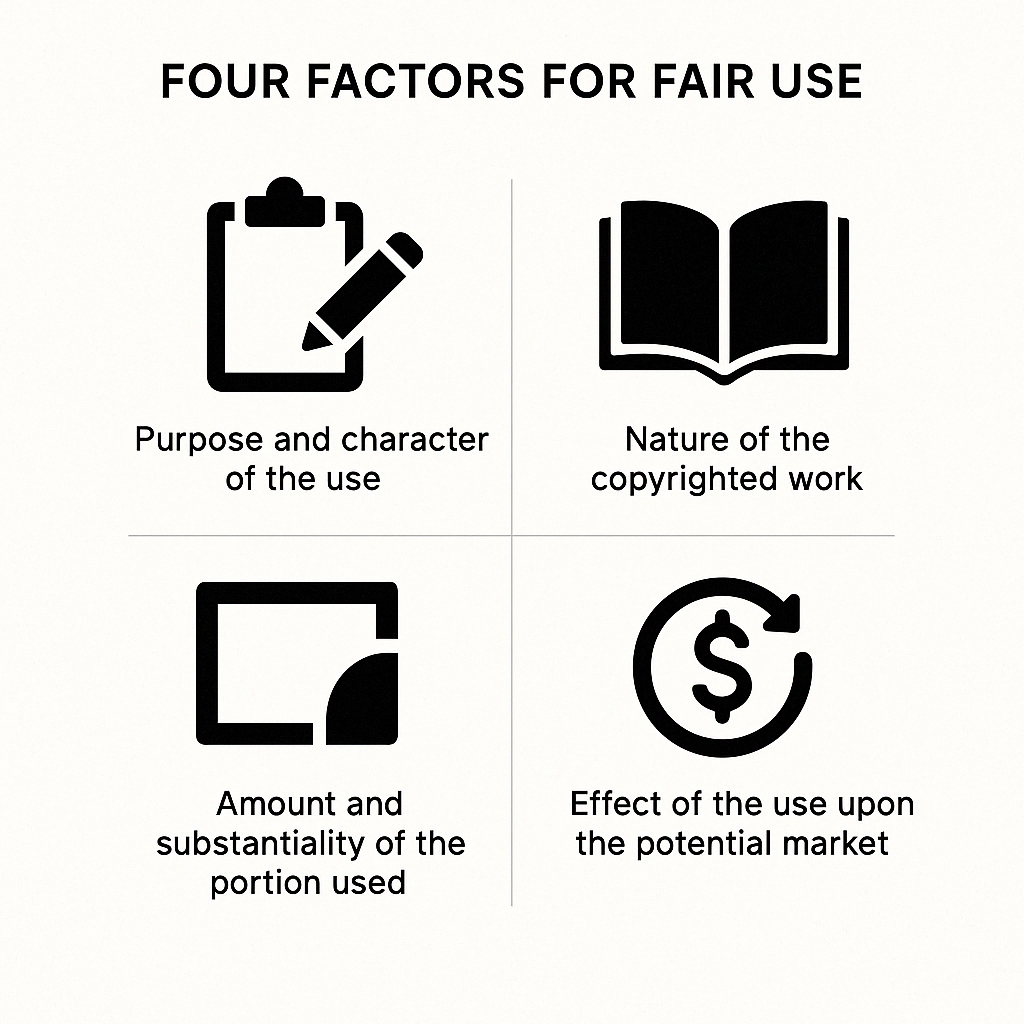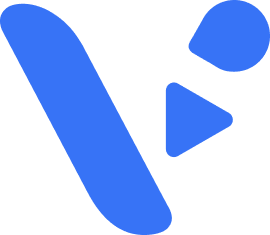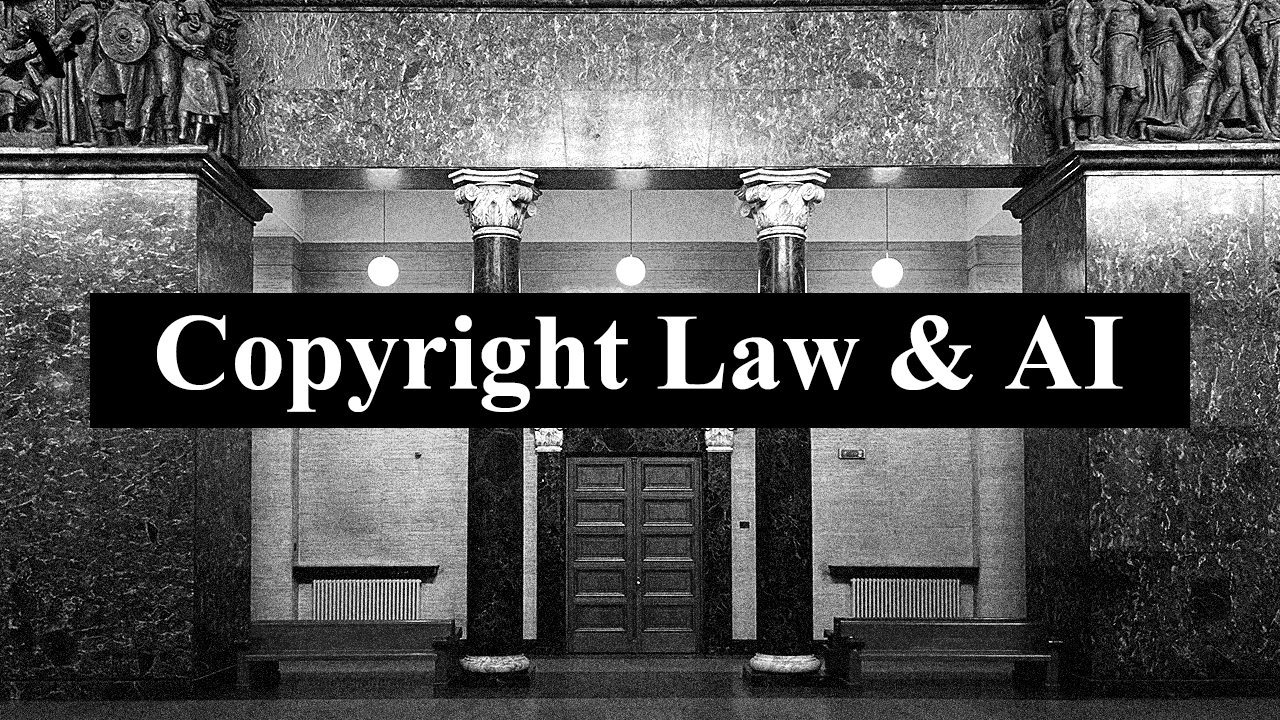AI is poised to change everything. Tools like ChatGPT, image generators, and AI-powered video makers are giving creators and businesses powerful new ways to make things faster, cheaper, and sometimes even better. But all that innovation comes with a catch: we’re still figuring out how U.S. copyright law applies to it all.
And the truth? It’s messy.
How copyright works (and how AI gets involved)
First, a refresher. U.S. copyright law protects original works of authorship. This includes books, movies, music, images, code, and more. If you create something, you get the exclusive right to copy, adapt, and distribute it.
But there are some exceptions, like fair use, which allows limited use of copyrighted content without permission for things like commentary, criticism, teaching, or research. Fair use is judged based on a four-factor test, which looks at things like how much content is used, whether the use is transformative, and the effect on the original work’s market.

Here’s where AI complicates things.
Most generative AI systems are trained on massive amounts of data scraped from the internet. That data includes books, images, songs, code, news articles, and more, many of which are copyrighted. So the big questions are:
- Is it legal to use copyrighted content to train an AI model?
- Who owns the stuff the AI creates?
The legal gray areas (and courtroom battles)
Let’s take the first question: is it okay to use copyrighted work to train AI?
Tech companies say yes, because they argue training is “transformative,” like teaching a human artist by showing them examples. They also claim it falls under fair use.
Creators and rights holders strongly disagree. They say this is copying on a massive scale, often for commercial gain, without permission or payment. Dozens of lawsuits have been filed against companies like OpenAI, Meta, Stability AI, and Anthropic.
Some key cases to know:
- Thomson Reuters v. ROSS Intelligence: A judge ruled that using Westlaw’s legal headnotes to train an AI tool wasn’t fair use, because the AI created a competing product. This is a big deal because it’s the first U.S. ruling to say AI training data use can be infringement.
- Authors v. OpenAI: Writers like Sarah Silverman and Ta-Nehisi Coates sued OpenAI for training on their books. Some claims got dismissed, but others (like the legality of training data) are still being debated.
- Visual Artists v. Stability AI: Artists argued that their styles and specific works were used to train image generators. A judge allowed the case to continue, saying the artists made a plausible argument for infringement.
- Universal Music Group v. Anthropic: Music publishers said Anthropic’s Claude chatbot reproduced copyrighted song lyrics without permission. A partial settlement led Anthropic to add filters, but the case is still active.
Now for the second question: who owns AI-generated content?
Under U.S. law, you need a human author for a work to be copyrighted. So if an AI creates something entirely on its own, it’s not protected. That means it may fall into the public domain, and anyone could use it.
Businesses that use AI to generate content often respond by having a human edit, guide, or review the output. That way, there’s enough human authorship to claim copyright.
But even if the output is human-guided, you can still run into trouble if it’s too similar to the training data. That’s why some AI companies are putting filters in place to avoid spitting out song lyrics, paragraphs from books, or other copyrighted material.
What this means for businesses and creators
Here’s the short version: until U.S. courts or lawmakers give us clearer answers, everyone working with generative AI needs to be cautious.
For creators, the risks are two-fold. First, AI may be trained on your work without consent. Second, AI tools might make it harder to protect or monetize your work if they can replicate your style or ideas.
For businesses, the main concern is liability. If you use AI-generated content that includes copyrighted material, you could be hit with a legal claim. And if your AI-created content can’t be copyrighted, your competitors might be able to copy it freely.
There’s still a lot of uncertainty, and that can slow down projects or make teams hesitant to use AI tools at all.
How to Stay Safe While Using Generative AI
Even though the rules are still evolving, there are a few smart ways U.S.-based creators and businesses can protect themselves:
- Use reputable platforms that clearly explain where their training data comes from (hint: Visla does this really well).
- Layer in human input wherever you can. If you use AI to draft a script or create visuals, make sure a human edits, rewrites, or designs the final version.
- Keep records of your creative process. If you ever need to prove originality or human authorship, having notes or drafts helps.
- Avoid prompts that ask AI to mimic specific artists or copyrighted works. That can increase your risk of generating infringing content.
- Get familiar with copyright basics—especially what counts as infringement and how fair use works. You don’t need to be a lawyer, but a little knowledge goes a long way.
- Stay updated as new legal decisions roll out. Follow creators’ rights organizations, industry blogs, or even set up Google alerts for key cases.
In short: be proactive, be mindful, and when in doubt, double-check. That way you can keep creating with confidence, even while the rules are still catching up.
The ethical dimension: consent, credit, and compensation
Even beyond legal rules, there’s an ethical conversation happening.
Many creators feel it’s unfair for tech companies to use their work without asking, crediting, or compensating them. Some are pushing for opt-out options or revenue-sharing models. Others want new laws that better protect their rights in the age of AI.
Meanwhile, AI supporters say learning from others is how all creativity works. They argue that stifling AI training could hold back innovation.
There’s no easy answer here. But it’s clear that trust, transparency, and fairness matter. And how companies handle these issues now will shape the future of AI and creativity.
How Visla avoids these copyright pitfalls
At Visla, we believe in using AI the right way.

While many platforms use scraped content of unknown origin, Visla only pulls footage, music, and assets from highly curated, fully licensed libraries. We partner with trusted, copyright-friendly brands like Storyblocks and Getty Images, giving users access to millions of royalty-free clips and tracks that are cleared for commercial use.
This means you don’t have to worry about accidentally using infringing content when you create videos with Visla.
And because Visla combines AI automation with human creativity, letting users guide, edit, and refine every step of the way, you keep full control over your work. The end product reflects your intent and vision, and you can claim ownership of it.
We’ve also built ethical practices into the foundation of our platform:
- Our AI does not generate content based on specific living artists’ names or known copyrighted works
- All AI-generated content is customizable and editable by the user
- We prioritize transparency, safety, and respect for creators
In other words, we’re serious about copyright, because your peace of mind (and your content’s legality) matters.
Stay informed and create confidently
Generative AI is exciting. It’s unlocking new ways to create, communicate, and collaborate. But it’s also raising big questions about copyright, ownership, and fairness.
Until U.S. courts, lawmakers, and the industry settle on clearer rules, it’s up to all of us to tread thoughtfully.
For creators: protect your work, speak up, and know your rights. For businesses: choose ethical tools, review your AI workflows, and keep humans in the loop. And for anyone using Visla: create confidently, knowing we’ve got your back when it comes to copyright.
Because in the end, it’s not just about making great content. It’s about respecting the creativity behind it.

